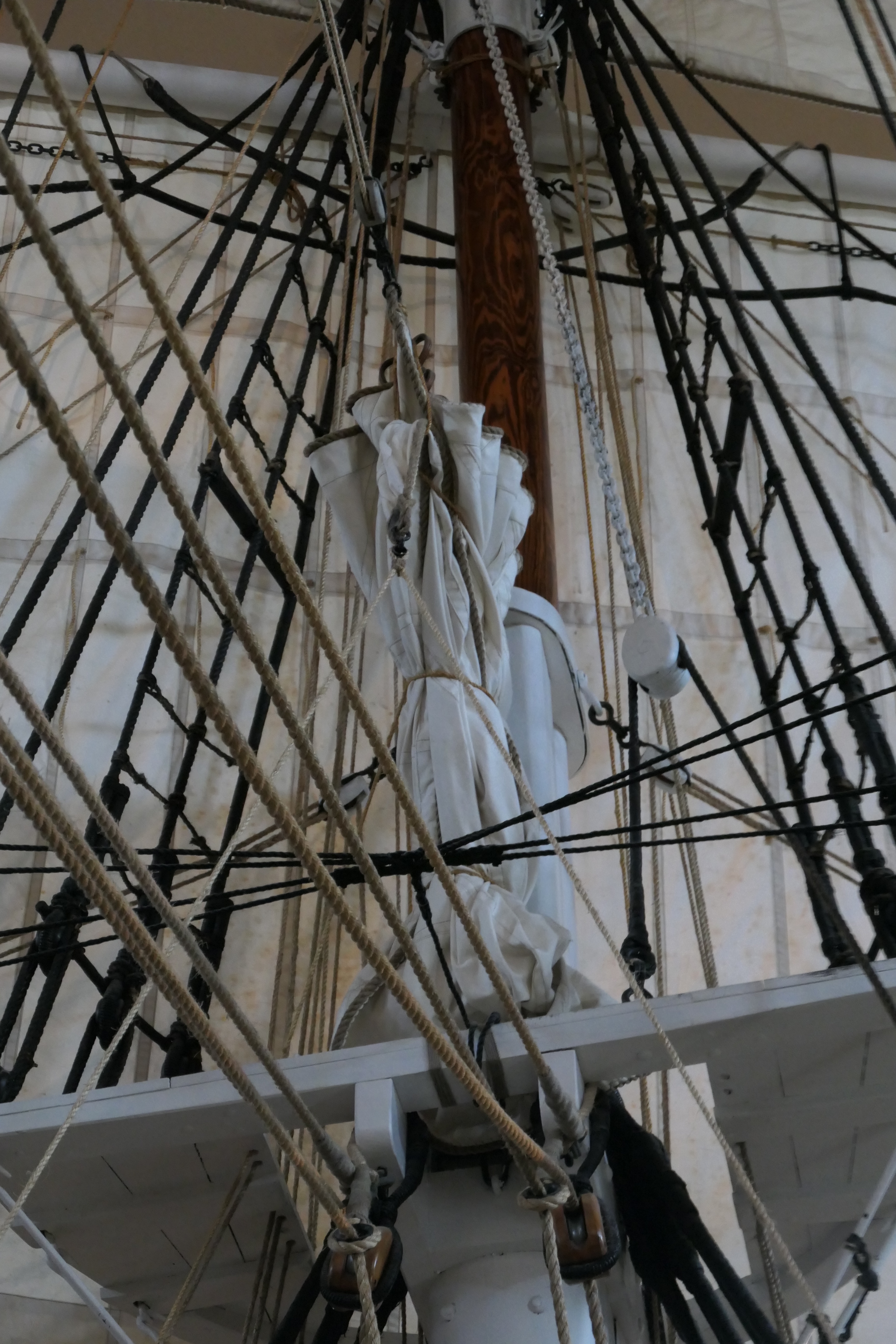“I now find that I could have landed in no other part of the United States, where I should have found a more striking and gratifying contrast to the condition of the free people of color in Baltimore, than I found here in New Bedford….Here in New Bedford, it was my good fortune to see a pretty near approach to freedom on the part of the colored people.”
FREDERICK DOUGLASS, MY BONDAGE AND MY FREEDOM (1855)

I spent the very last day of my East Coast trip in New Bedford, completely clueless, as so often, about the city, its role in the economy of the 19th century and its importance as a stop on the Underground Railroad.

I learned about all of it in the context of a visit to the National Park Service there which has an educational movie about the whaling industry and its role in employing run away slaves, as well as bringing members of far flung communities along the whaling routes back to settle in New Bedford. The original protestant English and Dutch settlers were soon joined first by Polish contemporaries, then a large Portuguese population that came with the return of the whaling ships from the Azores. Former slaves arrived, helped by Quakers soothing their conscience over the riches they had amassed (on the back of the whaling crews.)

For more detailed information, here is a good site of the New Bedford historical society.

Eventually I visited the Whaling museum, which is a candy store for photographers, a gem for historians, and an overall thrill to explore for the sheer variety of things, crafts and art presented. (Any of the linked sites have numerous terrific photographs from days gone by.)


The building was erected over 100 years ago by a wealthy patron; it is large enough to house a half-size complete whaling ship, everything scaled to size, that you can enter and explore. The various halls around it display the history of the industry, the tools and fates of the various populations affected by whaling.

And unquenchable thirst for the oil (derived from whale blubber) that burns bright and smokeless led to ever farther exploration and overfishing, from the Atlantic, to the Pacific, to the Arctic. Industry barons made a fortune, the sailors a pittance, often being on one of the boats for 3 or 4 years at a time, seeing a whale only every 3 months or so.

While the supply of whales was dwindling, in the 1860s, Pennsylvania oil field exploration started to provide kerosine to the market. It has always been argued that market forces – increasingly expensive whale oil vs. cheap kerosine and changes in technology – led to the switch over. In truth there was government intervention favoring the newly booming oil industry: before 1860 the distribution looked like this:
Camphene or “burning fluid” — 50 cents/gallon (combinations of alcohol, turpentine and camphor oil – bright, sweet smelling)
* whale oil — $1.30 to $2.50/gallon
* lard oil — 90 cents (low quality, smelly)
* coal oil — 50 cents (sooty, smelly, low quality) (the original “kerosene”)
* kerosene from petroleum — 60 cents (introduced in early 1860

Camphene was by far the most used agent given its price until the government introduced a high tax on alcohol, which forced it off the market, now open for kerosine. “The Civil War cut off Southern pine forest turpentine supplies. The IRS was established to pay for the Civil War, and their first tax was on alcohol (initially beverage[s] but it applied to all fuel uses of alcohol). Some people saw the end of one industry and the beginning of another and accelerated the process while buying stock to profit from the transition.” Details here.

Nonetheless, greed had led to overfishing. In the meantime, illness, accidents and the dangers of sitting in a rowboat being dragged on a rope by an angry, hurting whale with a harpoon in its side across the ocean away from the large ship, cost innumerable lives. But for people of color it was a possible escape, better than what awaited them on US soil.
When the whaling shut down ( officially the US stopped commercial whaling in 1972), places like New Bedford in the late 1800s developed new industries: cotton mills, iron rolling plants and the production of art glass: “The tremendous demand for managers, skilled labor, and ordinary factory-workers that these industries required exceeded the region’s indigenous capacity. Immigration from abroad, migration from other parts of the United States, and the recruitment of specialist technicians contributed to a dramatic increase in the city’s population, from 15,000 to 60,000 in two generations.” (Source)

The museum educates about whale biology and the history of their plight.

Check out the bones of many a Moby Dick’s cousin yourself!



It also offers huge displays of the scrimshaw carvings and macrame knotting that were a pastime of these men caught on a ship for years. You can wander among replicas of the captains’ salons, and admire the silver and porcelain that spoke of their wealth.




And if you are lucky – as I was – you can catch an exhibit of 15th and 16th century Dutch paintings all devoted to seascapes and whaling expeditions.



A highly recommended outing if you are in those parts of the world!
And here is the appropriate music: sea chanties.






Steve T
In Hawaii there is a liquor called ‘Okole Hau’ which translates to ‘Iron Bottom.’ The name comes from cast iron pots used on whaling ships to extract oil from strips of blubber. They came in pairs, each with a flat portion that when placed together lessened spillage as the blubber was passed from one pot to its sister. From the side the pairs of pots look like a human butt . . .
Dave Schaerer
Frederike – Really enjoyed your post on the whaling industry. Now I have a reason to visit New Bedford if I travel to the East Coast!